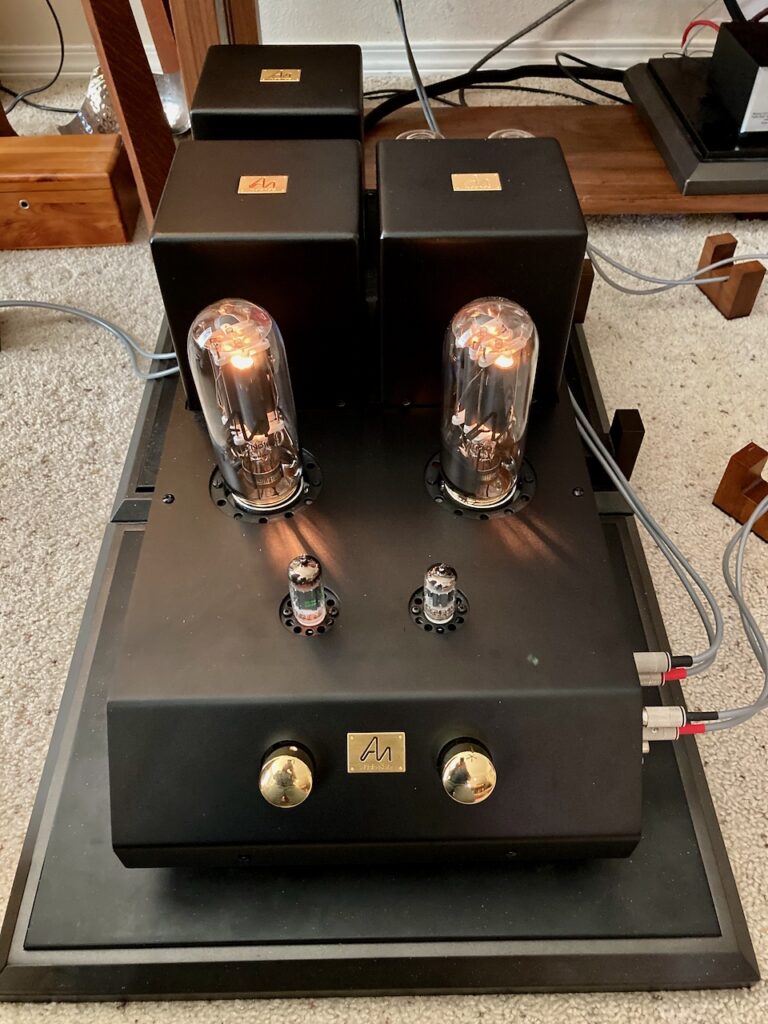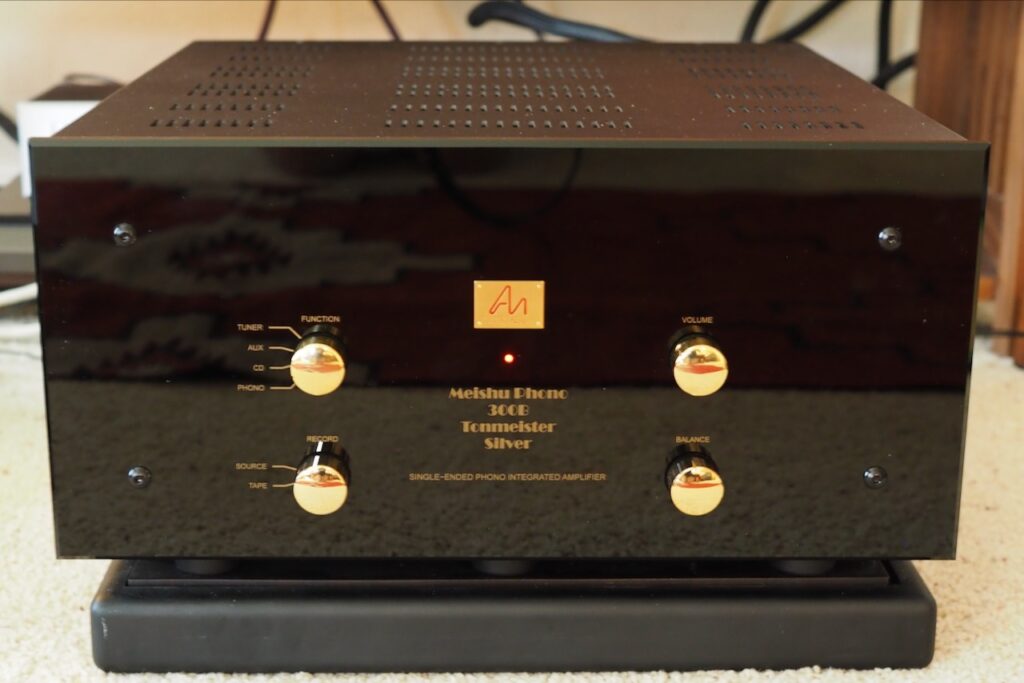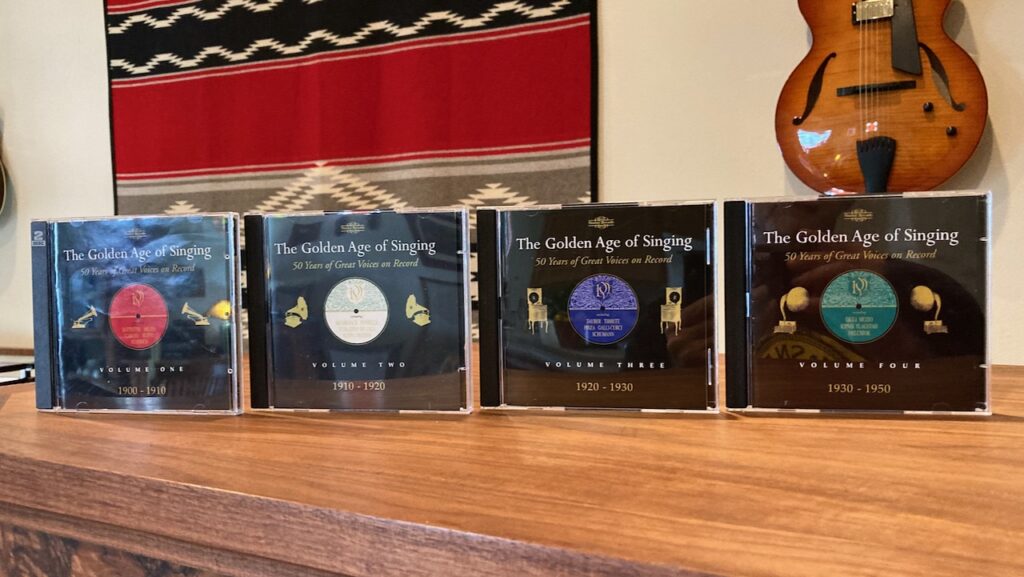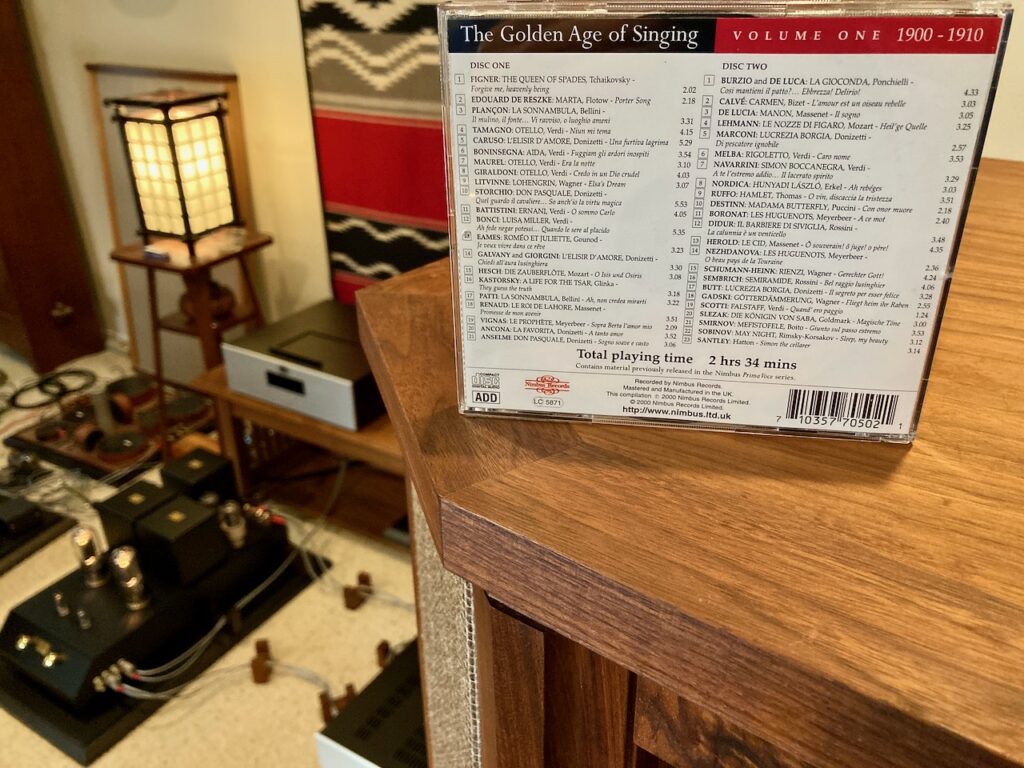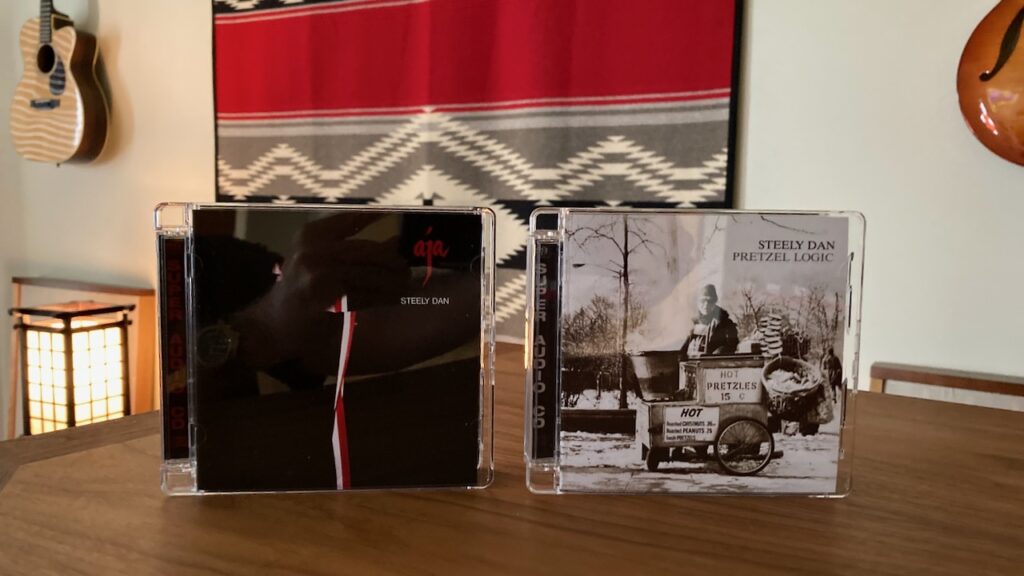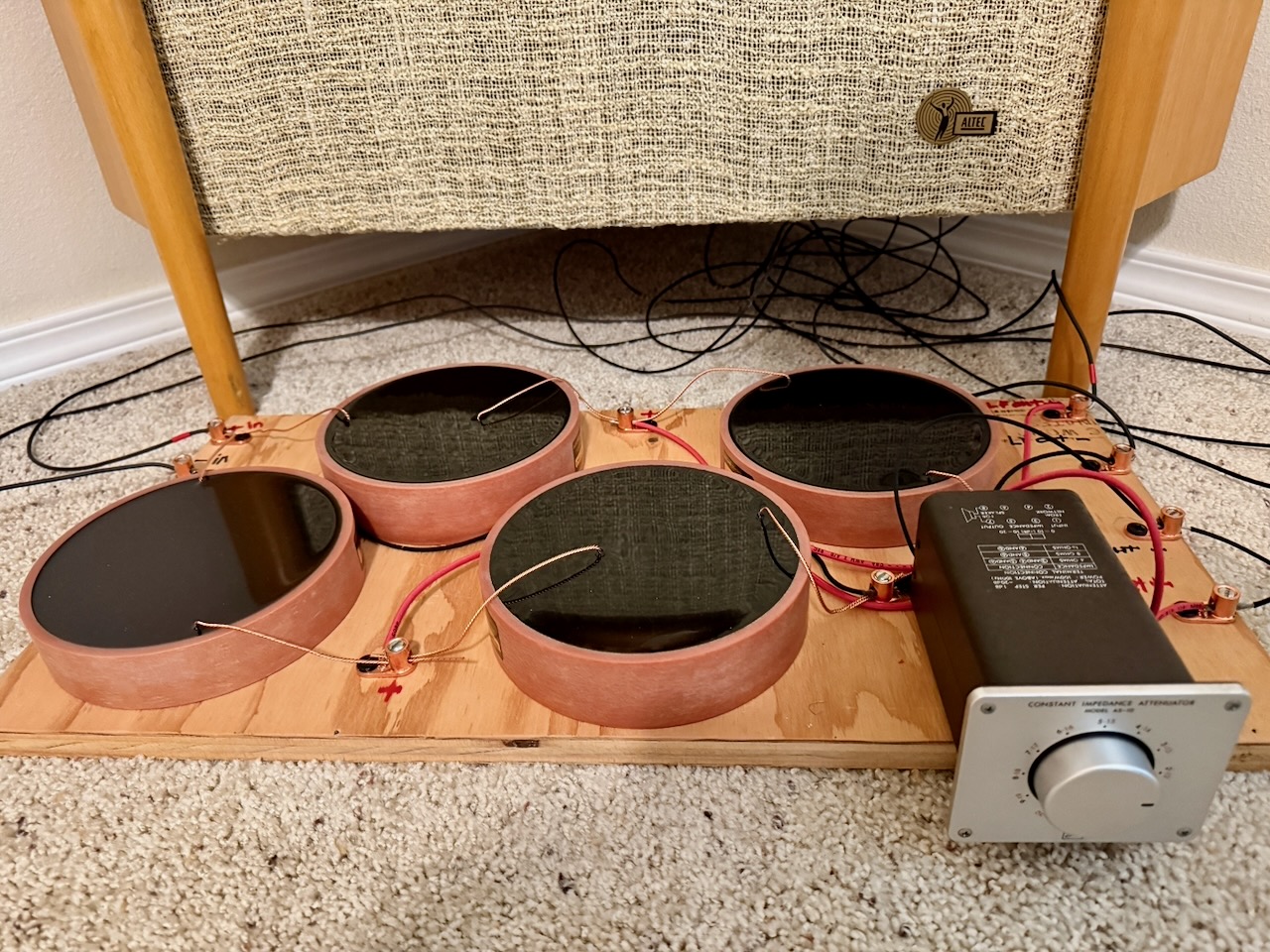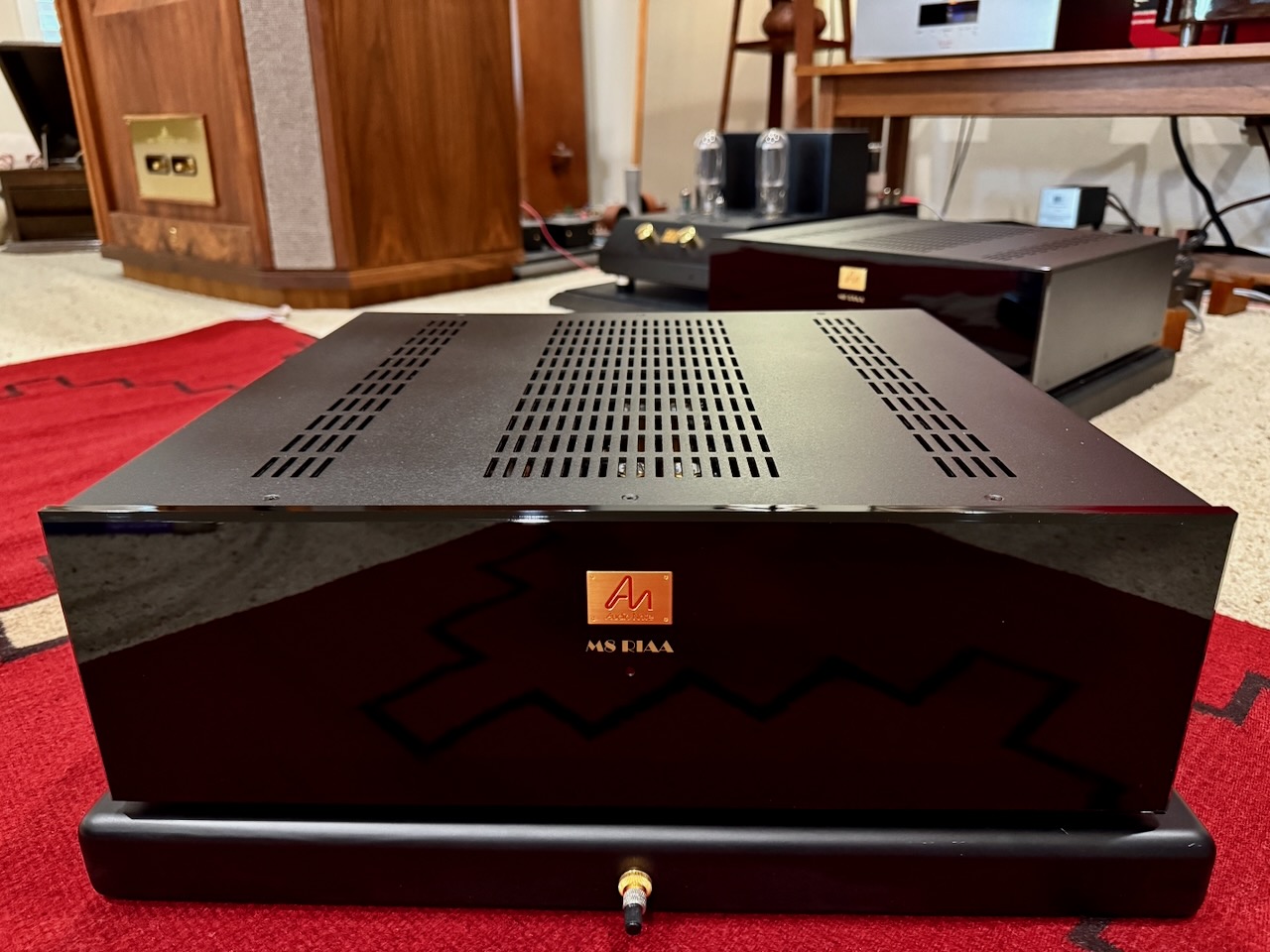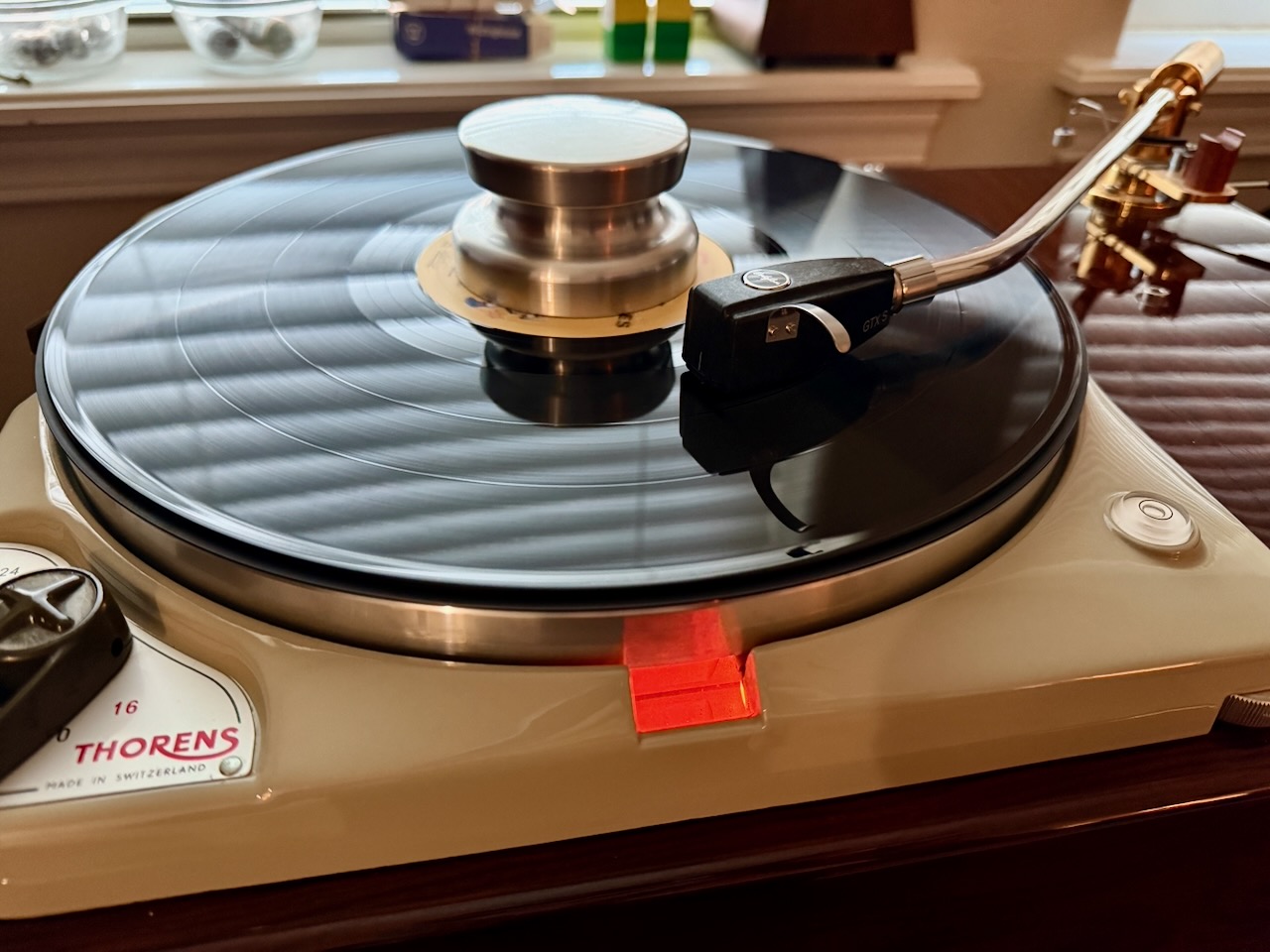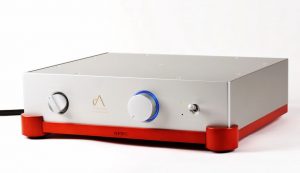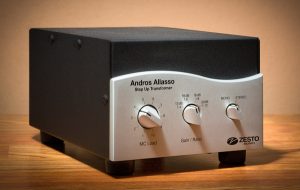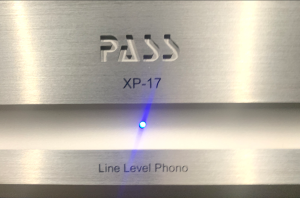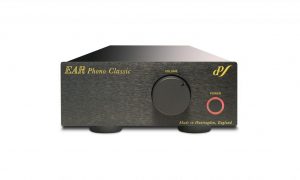Listening Impressions
My introduction to single-ended-triode (SET) amplification was circa 1996, and I've been enjoying SET designs based on 45, 2A3, 300B, 845—and now 211 valves—for almost 30 years now.
The Audio Note (UK) Tomei 211 integrated amplifier is easily the highest performing SET amplifier—or any kind of amplifier—that I have personally encountered.
In fact the Tomei is so good at so many aspects of performance—and sets precedence in aspects of performance that I hadn't even realized were possible until now—that I have struggled at figuring out how to adequately inform you about my perceptions of its performance. It's performance really goes beyond words, and if you get a chance to hear a Tomei 211 for yourself you'll know exactly what I mean.
Given my introductory discussion of the Audio Note (UK) "performance level system", let me start with a brief comparison about the performance of the Level 3 Meishu Phono Silver Tonmeister 300B and the Level 4 Tomei 211 integrated amplifiers.
The Meishu 300B (above) is one of the finest amplification components I've had the pleasure to listen to in my home audio systems, and indeed it is what its "Tonmeister" designation implies, a "sound master" that excels in delivering musical performances from albums, with an abundance of musicality and sound quality.
Tonally the Meishu 300B is the archetypal 300B amplifier, with beautiful overall tone, it is a touch to the warm side, has rich harmonics, a holographically vivid visuospatial presentation, excellent dynamic response, and a well-balanced frequency response from top to bottom.
During its stay with me, the Meishu 300B won praise from more visitors for its engaging way with the music than any other amps that were present at the time.
Then the Tomei 211 integrated amplifier arrived. The Tomei 211 is indeed at another "Level" in performance compared to the already excellent Meishu 300B, and that enchantingly lit pair of 211 valves possess an internal fire and energy that makes music come alive in my soul like no other amplifier in my experience.
How much better is the Tomei 211 overall? It's a big difference rather than a subtle difference. It's a bit silly to try to quantify subjective HiFi performance impressions, but everyone asks me to do that, so I'll say this: The Tomei 211 at least triples the performance of the Meishu 300B, which is actually commensurate with its tripling in price. You get what you pay for with the Tomei 211 integrated amplifier in Audio Note (UK)'s "performance level system".
The Tomei 211 is more tonally uncolored, brightly lit, and resolving than the Meishu 300B. For those of you familiar with nature of the various kinds of SET amplifiers, I'd say the Tomei 211 reminds me most of a transparent 45 SET amp, but with 10 times more power, a touch more sweetness, more dynamic prowess, more ability to play at live-like levels, a more refined visuospatial presentation, is more relaxed and elegant sounding, and well … the Tomei 211 just possesses more of everything that makes recorded music come alive in my listening sessions.
After getting the Tomei 211 installed into my system, and letting it settle in for a while, I played quite a large number of CDs through it with the Audio Note (UK) CD 5.1x Red Book CD player.
Regardless of whether I was listening to lower-fidelity 78 transfers from the acoustic and electric eras of recording, or the very best of high-fidelity recordings from the stereo magnetic era of recording, I was always impressed with how the Tomei 211 could turn any CD I threw at it into a mesmerizing and edifying listening experience.
That is a remarkable—and unparalleled in my experience—performance quality that I attribute directly to Peter Qvortrup's "comparison by contrast" method of voicing components by ear.
I've been listening to a lot of 78 transfers, as usual, and have been thoroughly enjoying them.
For example: This four volume set from the Nimbus Records 'Prima Voce' series of albums—The Golden Age of Singing—contains eight CDs totaling 10 hours and 13 minutes of some of the greatest singers of the acoustic and electric eras of recording (above).
I highly recommend these CDs for the music, and the sound quality is remarkably good through the Tomei 211 amp, particularly for 78 transfers.
Let me introduce what I consider to be one of the special attributes of the Tomei 211 SET amp, an aspect of performance that no other amplifier I've encountered can come close to matching.
I'll call this performance attribute playability: An ability to play any album regardless of its fidelity to deliver a remarkably engaging listening experience that feels like I am experiencing the full impact of the musicians artistic intent.
This is a performance element as much felt as heard, and you really need to give the Tomei 211 a listen to fully appreciate this ability—it's uncanny how much this contributes to what I consider to be a complete music listening experience.
Whether a high-fidelity or lower-fidelity recording, the result is a complete "high-fidelity" listening experience through the Tomei 211 SET integrated amplifier.
One of the things I've learned with the Tomei 211, to truly experience what it is doing, it's important to listen with both sets of one's ears, the ears that are on the sides of your head that you listen to the sound coming from the loudspeakers with, and the inner set of ears of the soul that allows one to experience how the music playing through the Tomei 211 is transforming one's inner being and emotions by offering a deep dive into the artistic intent of the music.
Now the earliest of these 78 transfers, like Nikolay Figner singing "Forgive me heavenly being" from The Queen of Spades (Berliner, 1901), are lower in fidelity compared to modern recordings, with the high and low-frequencies truncated, and the direct-to-disc recording has a bit of surface noise, but what is there—the midrange—is remarkably vibrant and engaging as played through the Tomei 211.
What I heard from the Tomei 211 with my outside ears was a beautifully rich and natural tonal balance, a ghostly spectral visuospatial image of Nikolay Figner that was as vivid as any imaging delivered by the best of stereo magnetic era recordings, an artful piano accompaniment behind Nikolay, a sense of dynamism in the vocals, and a huge billowing sense of acoustic era space from a seemingly infinite soundstage that filled my room.
Yeah, the 78 transfer is a little bit noisy, but the singing is so amazing I don't care. I have no idea how Peter can extract such superb sound quality with the Tomei 211 from these ancient 78 transfers, but he does, and it is amazing for me to hear that level of playability performance from lower-fidelity acoustic era recordings.
With my inner ears I felt shaken, stirred, and awed at the intensity of emotion and feelings produced within me as this music wrapped around me and infused my soul, courtesy of the Tomei 211.
I had a strong inner sense that I was realizing the "best of what the artists and their art can provide" from the albums, and I guarantee you that Nikolay Figner would have been stunned by what this recording of him was capable of delivering to the listener in this audio system compared to what he would have heard over his own gramophone.
One of the great strengths of the Tomei 211, and an aspect of high-fidelity performance that I hadn't even realized was possible to this extent until now, is the way it can take even a lower-fidelity recording, and turn it into a beautiful and amazing recording to hear. Even more importantly I could feel a direct inner transformation in my emotions in response to the artistry of the music, a transformation that exceeds even the substantial thrills the best stereo magnetic era recordings can provide.
How does the Tomei 211 amp do this? I don't know, but as a result, I found myself listening to albums in a new way, and I think in a more meaningful way.
I wasn't just listening to albums to experience the thrills of their external sound qualities, but rather I was also experiencing an internal transformation from listening to the music, in terms of emotions, and what felt like was the artistic intent of the musicians.
That inner transformational ability is a special ability that the Tomei 211 possesses, which allows it to deliver a complete external/internal music listening experience, to a greater degree than any other amplifier I've ever encountered.
Now let's shift gears so I can give you an example of listening to an audiophile spectacular CD from the stereo magnetic era of recording with the Tomei 211 integrated amp.
You can always count on Chad Kassem's Analogue Productions record label to deliver top-notch sound quality from albums, like the recently released Aja and Pretzel Logic albums by Steely Dan, which were mastered by Bernie Grundman from an analog, non-Dolby EQ'd quarter-inch 15 ips tape copy.
Aja in particular is hugely popular with audiophiles because of its impressive sound quality and vivid visuospatial effects, which along with Steely Dan's impressive musical chops, is why Aja won a Grammy for Best Engineered Album after its release.
Not only was Aja a spectacular studio recording, but in addition to Fagan and Becker, it also featured 40 of the greatest session musicians to ever walk the Earth contributing to the album.
For audiophiles there is a lot to like about Aja. The Tomei 211 reveals a wide, tall, and deep soundstage, and tons of images of instruments and vocalists that appear in front of the loudspeakers, and in multiple layers back into the depths of the soundstage.
I thought Aja was spectacular to hear and 'see' in visuospatial terms, like a grand aural fireworks display going on all around me, surprising and delighting me.
Some studio recordings can sound a little synthetic and soulless on audiophile-style audio systems, but not so with the Tomei 211 playing Aja, which shows the recording to have superbly natural tonality, impressive timbral realism, live-like dynamics, and the Tomei 211 showed the recording for what it was, a musically artistic tour de force of a studio album.
I thought the Tomei 211 was very impressive in terms of visuospatial sound qualities like imaging and soundstage that many audiophiles cherish, but it was equally impressive in terms of musicality, with extraordinarily convincing timbral textures and tone, an astonishing range of dynamic expression, realistic portrayal of the feel of tempos, and well delineated chordal tone colors, all of which when put together place the Tomei 211's level of emotional involvement off the usual high-fidelity charts.
The Tomei 211 thrilled and excited my outer ears with its incredible sound quality and visuospatial pyrotechnics on Aja, and then my inner ears were seduced, as the Tomei 211 first caressed, and then proceeded to ravage my feelings and emotions with the incredible musical artistry of Aja. What a delicious ride!
The benefit of the Tomei 211's ability to have superb sound quality in audiophile terms, and even more importantly, the ability to transmute albums of any fidelity into a remarkably transformative inner listening adventure that is full of excitement and emotion, cannot be overstated.
As such, the Tomei 211 opens up new dimensions in music listening that likely few music lovers and audiophiles have ever experienced.




